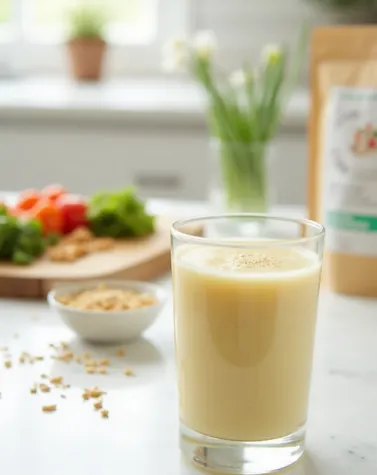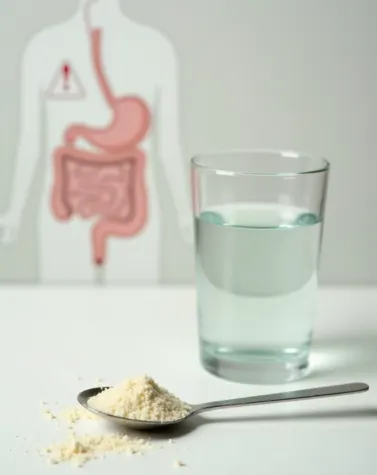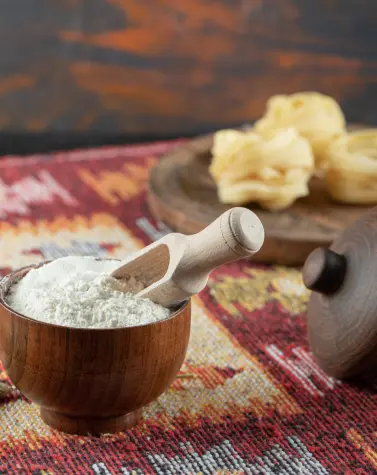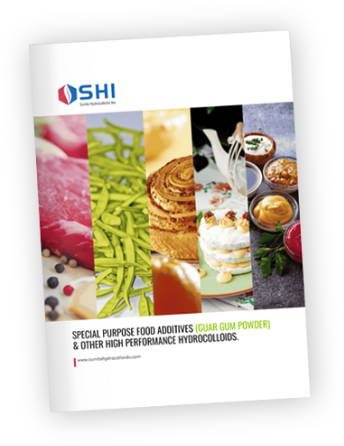
Essential Guide to Food Additives
What keeps your salad dressing from separating or your yogurt from turning watery? Food additives! These ingredients are added during processing to improve texture, extend shelf life and maintain consistency across batches.
Food additives are used to achieve specific functions in processed foods. From thickeners and stabilizers to additives that enhance flavor such as flavor enhancers and preservatives, additives help manufacturers deliver products that meet consumer expectations.
Many foods, both processed and natural, contain additives or ingredients that serve similar functions. In this blog, you will learn what food additives are and how they are regulated.
What Are Food Additives?
Food additives are the behind the scenes players that keep your favorite products shelf ready, consistent and safe. These ingredients are added during processing to improve quality, extend shelf life and maintain texture, flavor or appearance. Food additives are a specific subset of food ingredients designed to serve particular functions in food processing such as preservation, flavor enhancement and ensuring safety.
Whether you’re formulating a new product or scanning a label, understanding how additives work helps you choose ingredients that deliver performance and meet consumer expectations.
What Do Food Additives Do?
They serve four key functions across categories:
- Preservation: They prevent spoilage and microbial growth and help control contamination and ensure food safety
- Texture control: They improve mouthfeel, viscosity and structure
- Flavor enhancement: They boost taste or balance profiles
- Appearance: They help maintain color, clarity and consistency
Types of Food Additives
Food additives are the reason your gluten free bread does not fall apart. Each additive plays a role in how food looks, feels and how long it lasts. Whether you are sourcing ingredients or comparing suppliers, understanding the types of additives helps you choose what works best.
Functional Categories of Food Additives
-
Preservatives
Prevent spoilage and extend shelf life and are used in processed meats such as hot dogs. They are also added to fruit juices and soft drinks to maintain freshness and prevent spoilage.
- Potassium sorbate inhibits mold and yeast in baked goods and beverages
- Citric acid controls pH and preserves freshness in sauces and canned foods
-
Sweeteners
Provide sweetness with or without calories.
- Stevia is plant based, zero calorie sweetener for beverages and snacks
- Sucralose is a synthetic sweetener used in sugar free products
-
Emulsifiers and Stabilizers
Mix ingredients and maintain texture. Salad dressings have emulsifiers and stabilizers to maintain texture and prevent separation.
- Guar gum is a natural hydrocolloid in dairy, sauces and gluten free baking
- Xanthan gum works well in acidic or frozen conditions
- Lecithin is common in chocolate and baked goods to prevent separation
-
Thickeners
Improve viscosity and mouthfeel.
- Modified starches are used in soups, gravies and fillings
- Cellulose derivatives control moisture in baked goods
- Guar gum delivers thickness even at low concentrations
-
Gelling Agents
Create structure and hold moisture.
- Agar is a plant based gel used in desserts and plant based products
- Pectin is found in jams and fruit fillings
- Carrageenan is used in creamy and dairy alternative products
- Gelatin is animal derived and used in gummies and marshmallows
-
Colorants
Help maintain or enhance visual appeal.
- Annatto adds yellow orange tones to cheese and snacks
- Beta carotene is used in beverages and baked goods
-
Flavor Enhancers
Boost taste without adding flavor of their own.
- MSG intensifies savory flavors in soups and snacks
- Yeast extract adds umami to sauces and seasonings
- Amino acids like glutamate which occur naturally in foods like parmesan cheese and is used to enhance umami flavor in many processed foods.
Artificial flavors are used in most foods to replicate natural tastes especially in soft drinks and snack foods. While many food additives are used to improve texture, flavor and shelf life, some are also added to boost the nutritional value of food products.
Natural vs Synthetic Additives
| Feature | Natural Additives | Synthetic Additives |
| Source | Plant or microbial; many occur naturally in plants, fruits and unprocessed foods | Chemically modified or lab created |
| Label appeal | Clean label friendly | May require technical labeling |
| Performance | May vary with conditions | Highly consistent |
| Common examples | Guar gum, stevia, pectin | Sucralose, modified starches, MSG |
| Use cases | Dairy, bakery, sauces, beverages | Processed foods, sugar free snacks |
Choosing unprocessed foods and fresh fruit can help consumers avoid synthetic additives and opt for ingredients that occur naturally.
Potential Health Concerns of Food Additives
While food additives play a vital role in the food industry, their impact on human health is major concern. Certain food additives such as artificial sweeteners and some flavor enhancers have been associated with adverse health effects in sensitive individuals. For example, some people may experience allergic reactions or digestive discomfort after consuming foods containing specific additives.
The safety of food additives is closely monitored by organizations like the Food and Drug Administration (FDA) and the European Food Safety Authority (EFSA) which conduct rigorous risk assessments before approving their use in foods. Despite these, it is important for consumers to stay informed about the potential health risks linked to certain food additives and to pay attention to how their bodies respond to different foods.
The food industry continues to innovate seeking safer alternatives and refining manufacturing processes to address these concerns and ensure the safety of the foods.
How Food Additives Are Regulated
Food additives go through a rigorous process before they are allowed anywhere near a label. The FDA evaluates the safety of food additives by reviewing scientific data and assessing potential health risks. International trade in food products relies on harmonized food additive standards to ensure safety and facilitate global commerce.
The United Nations through agencies like the World Health Organization and Food and Agriculture Organization coordinates global safety assessments of food additives. The European Union has its own regulations and labeling requirements for food additives to protect consumer health. Whether you are sourcing ingredients or comparing suppliers, knowing how additives are regulated helps you stay compliant and build trust.
How the FDA Regulates Food Additives
Every additive must meet strict safety standards set by the Food and Drug Administration (FDA). There are two main pathways:
A. GRAS Status (Generally Recognized As Safe)
Some additives like guar gum qualify as GRAS. That means they’re widely accepted as safe by experts based on long term use or solid scientific evidence. GRAS ingredients do not need formal FDA approval but they must meet the same safety expectations. Manufacturers can self affirm GRAS status or submit a notice to the FDA. If accepted, the agency may issue a “no questions” letter.
B. Food Additive Petition
If an ingredient does not qualify as GRAS, it must go through the food additive petition process. This includes:
- Chemical identity and purity
- How it’s made and used
- Toxicology and safety data
- Estimated exposure levels
The FDA reviews this data to ensure a reasonable certainty of no harm. If approved, the additive is listed in the Code of Federal Regulations with usage limits and labeling requirements.
What Is ADI?
The Acceptable Daily Intake (ADI) is the amount of an additive considered safe to consume daily over a lifetime. It is based on toxicology studies and includes a safety margin to protect vulnerable groups. For suppliers offering food grade guar gum, aligning with GRAS status and ADI guidelines is key to meeting buyer expectations and regulatory standards.
Identifying Additives in Food Products
Navigating ingredient lists on packaged foods can be challenging especially when it comes to identifying food additives. Food manufacturers are required to disclose all ingredients including common food additives like monosodium glutamate, citric acid and guar gum on food labels. To make more informed choices, look for products that specify their additives and check for labels indicating that an ingredient is “Generally Recognized as Safe” (GRAS) by the FDA.
You can also consult the FDA’s online database of approved additives to learn more about specific substances and their safety profiles. By becoming familiar with ingredient labels and understanding which additives are commonly used, consumers can better manage their intake and make choices that align with their health goals.
Trends in Food Additives
Clean label is no longer a niche, it’s the new standard. Brands are swapping synthetic additives for plant based alternatives that consumers recognize and trust. That shift is driving demand for natural thickeners, stabilizers and gelling agents like guar gum, pectin and agar.
Hydrocolloids are also evolving. New extraction methods and blends are improving performance across heat, freeze and pH conditions. Whether it’s a gluten free batter or a dairy alternative, formulators want stabilizers that work harder with less and transparency is front and center as buyers want to know where ingredients are sourced from, how they are processed and whether they meet FDA and GRAS standards.
Choosing the Right Additives
Food additives play a clear role in how products perform, taste and stay shelf ready. From preservatives like potassium sorbate to gelling agents like guar gum, each additive serves a purpose whether it is texture, flavor or stability. But safety is non-negotiable.
That’s why FDA approval and GRAS status matters when choosing ingredients that meet both performance and compliance goals. When eating foods containing additives, consumers should be aware of the potential for an adverse reaction or allergic reaction especially if they have sensitivities.
For clean label formulations, guar gum stands out. It’s plant based, FDA reviewed and delivers thickening power across dairy, bakery and gluten free applications.
Related Insights on FDA-Approved Food Additives
Understanding the specific roles of food additives is crucial for both consumers and manufacturers. If you’re looking to dive deeper into how emulsifiers, stabilizers, and thickeners are regulated and used in food processing, explore the following resources:
- FDA-Approved Food Emulsifiers – Learn how emulsifiers help blend ingredients and maintain texture in products like salad dressings and baked goods.
- FDA-Approved Food Stabilizers – Discover how stabilizers ensure consistency and prevent separation in dairy, sauces, and beverages.
- FDA-Approved Food Thickeners – Explore the role of thickeners in enhancing viscosity and mouthfeel in soups, gravies, and fillings.





